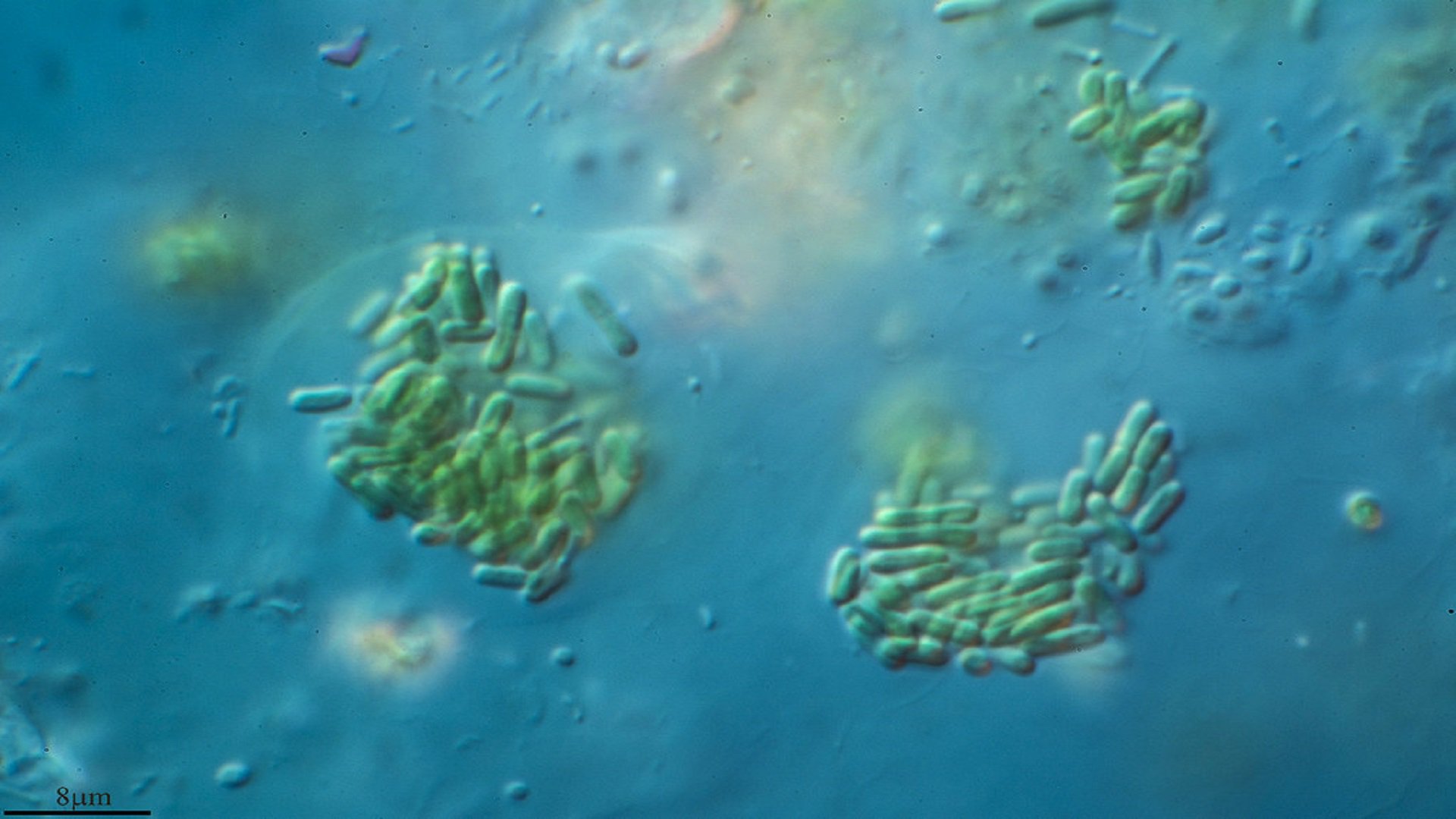Synechococcus is a cyanobacterium, but is better known as blue-green algae. These microorganisms occur in both freshwater and saltwater and are capable of photosynthesizing due to the pigments they possess. Cyanobacteria have pigments that can use a wider range of light to photosynthesize than plants can with their chloroplasts. The microbe of this month has a distinctive pigment with orange fluorescence for photosynthesis: phycoerythrin. This can be detected to identify Synechococcus. Additionally, Synechococcus is one of the model organisms currently being extensively researched for its potential applications in biotechnology.
Synechococcus is a cyanobacterium, but is better known as blue-green algae. These microorganisms occur in both freshwater and saltwater and are capable of photosynthesizing due to the pigments they possess. Cyanobacteria have pigments that can use a wider range of light to photosynthesize than plants can with their chloroplasts. The microbe of this month has a distinctive pigment with orange fluorescence for photosynthesis: phycoerythrin. This can be detected to identify Synechococcus. Additionally, Synechococcus is one of the model organisms currently being extensively researched for its potential applications in biotechnology.
Sweet Synechococcus
While we are all familiar with sugar, such as sucrose, isomaltulose may sound less familiar despite being closely related to it. They look alike and taste the same, but isomaltulose contains fewer kilocalories and has a lower insulin index. This makes isomaltulose a healthier alternative. Microbes like E. coli have already been used for the production of isomaltulose, but researchers found that the production could be even more efficient by using cyanobacteria such as Synechococcus. Cyanobacteria are capable of producing sugar themselves due to their ability to photosynthesize. This inspired scientists in designing cell factories that produce isomaltulose using Synechococcus.
Pure Blue-Green Algae
'Blue-green algae' is not often perceived as positive, probably due to the swimming ban in water where blue-green algae is present. However, blue-green algae occur in all water. Only when blue-green algae are present in large quantities can the toxins they release become dangerous to health. Blue-green algae, such as Synechococcus, are essential for underwater life, where they are often found as the basis at the bottom of the food chain.
Researchers are also finding more and more useful applications for Synechococcus, including water purification. The water purification process consists of many steps, including biological purification. Microbes are good at extracting the large amounts of nutrients from wastewater. Algae/cyanobacteria appear to be very suitable for this, and Synechococcus is a particularly sustainable option. Synechococcus is not only able to purify nutrients from the water (such as ammonium), but can also be harvested and processed into various sustainable products (such as biofuel).

